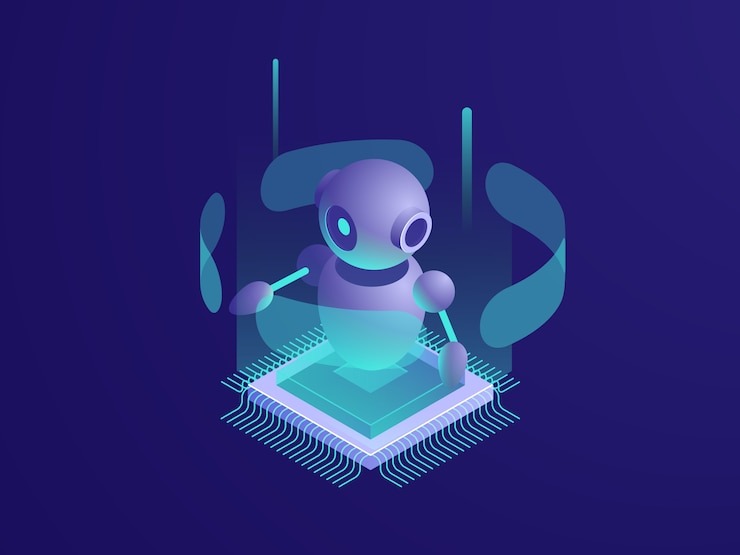In 2025, there are hundreds (if not thousands) of AI writing tools in the market.
ChatGPT, DeepSeek, Claude and lots of others have been super popular since 2022, and they keep getting better every day.
You type a few words, and in seconds, they can write a whole story, an essay, or even a report.
That sounds cool, right? But not for everyone.
In schools, more students are turning in work that might be written by AI.
Now teachers are stuck, as they don’t want to guess or accuse anyone unfairly. But they also don’t want to ignore the problem.
They need help—and that’s where AI detectors come in.
Just like AI writing tools are growing, AI detectors are popping up too.
Today, we’re looking at two of the biggest AI Detectors: STEM Forged and GPTZero.
Both are designed to detect the AI written content. But which one works better?
In this article, we’ll cover how accurate they are, how easy they are to use, and how well they handle different kinds of AI and human writing.
Let’s dive in!
Introduction
Before diving deeper into the comparison, let’s have a quick look at what both tools are.
STEM Forged
STEM Forged is an education-focused company based in Boise, Idaho.
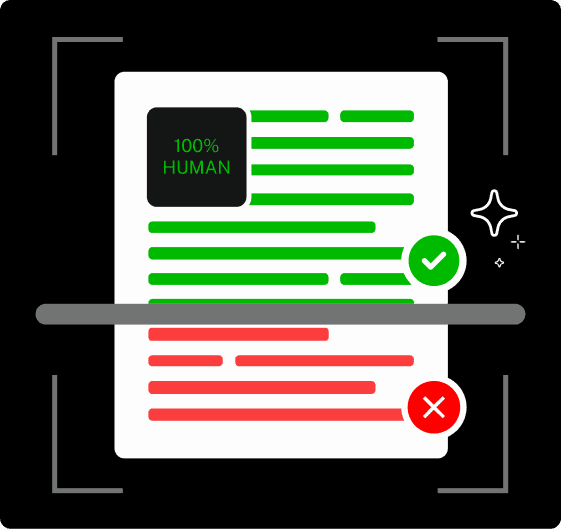

Never Worry About AI Detecting Your Texts Again. Undetectable AI Can Help You:
- Make your AI assisted writing appear human-like.
- Bypass all major AI detection tools with just one click.
- Use AI safely and confidently in school and work.
In early 2024, they saw that more and more students were turning in work written by AI, and teachers didn’t have the right tools to check it.
That’s when they launched their STEM Forged AI Detector.
It was part of a bigger system—an entire learning platform that also included an AI Lesson Creator and AI Tutor.
But the AI Detector was built to help teachers spot AI-written work and keep academic honesty strong.
When it first came out in April 2024, it had three important features:
- Sentence-by-sentence detection to check each line for signs of AI use.
- Confidence scores to show how likely it was written by a bot.
A feedback system that let teachers give comments on what the detector flagged.
This tool helped teachers understand and respond—which made it easier to handle tricky situations.
GPTZero
GPTZero was created by Edward Tian.
In late 2022, while on winter break from Princeton University, he saw how fast AI writing tools were spreading.
He realized how they could be used to cheat or spread false information.
So he decided to create GPTZero as part of his senior thesis project. This tools looks at two things:
- “Burstiness” – how much sentence styles changed (humans usually mix things up).
- “Perplexity” – how confusing the writing felt to an AI (human writing often surprises AI).
Real-World Testing: How Do They Perform?
To compare how well GPTZero and STEM Forged perform in practical scenarios, we followed a testing methodology inspired by ZDNet’s widely referenced benchmark.
We ran five distinct text blocks through both tools:
- Three AI-generated samples (ChatGPT-4), using varied prompts (educational, marketing, and narrative).
- Two human-written texts, both published prior to 2020 and confirmed as human-authored.
Each sample was tested individually.
For GPTZero, we considered scores above 70% to indicate strong AI detection.
For STEM Forged, which uses a 0–10 scale, scores of 7 or higher were interpreted as strong signals of AI-generated content.
STEM Forged Results
STEM Forged takes a different approach: instead of looking at abstract patterns, it scores each sentence on a 0–10 scale based on how “AI-like” it sounds — giving educators a more practical, granular view of the text.
In our test, this method held up incredibly well.
All three AI-generated blocks were clearly flagged with high confidence, and both human-written texts stayed in the safe zone with low scores.
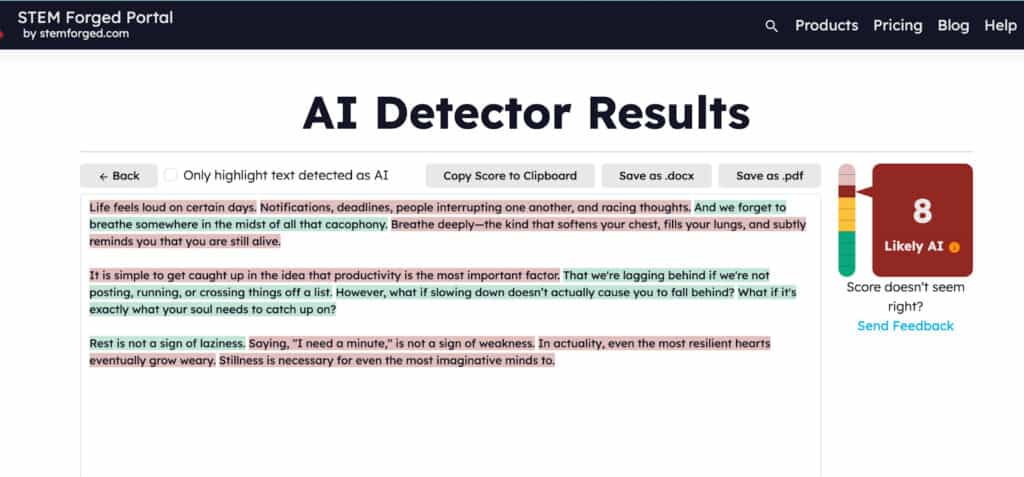
That sentence-by-sentence breakdown seemed to make a difference, especially with more nuanced writing styles.
It handled every block — from structured to creative — with consistent accuracy.
| Text Block | STEM Score (1–10) | Detected as AI? |
| Block 1 – AI | 9 | Yes |
| Block 2 – AI | 8 | Yes |
| Block 3 – AI | 8 | Yes |
| Block 4 – Human | 3 | No |
| Block 5 – Human | 2 | No |
Summary: STEM Forged correctly identified all five samples, flagging each AI-generated block and passing both human-written texts.
GPTZero Results
GPTZero approaches detection by analyzing the rhythm and predictability of the text — using concepts like “perplexity” and “burstiness” to guess whether a human or a machine likely wrote it.
In our tests, it managed to handle more structured, formal AI outputs decently, though it clearly struggled once the language required a touch of creativity or natural conversation.
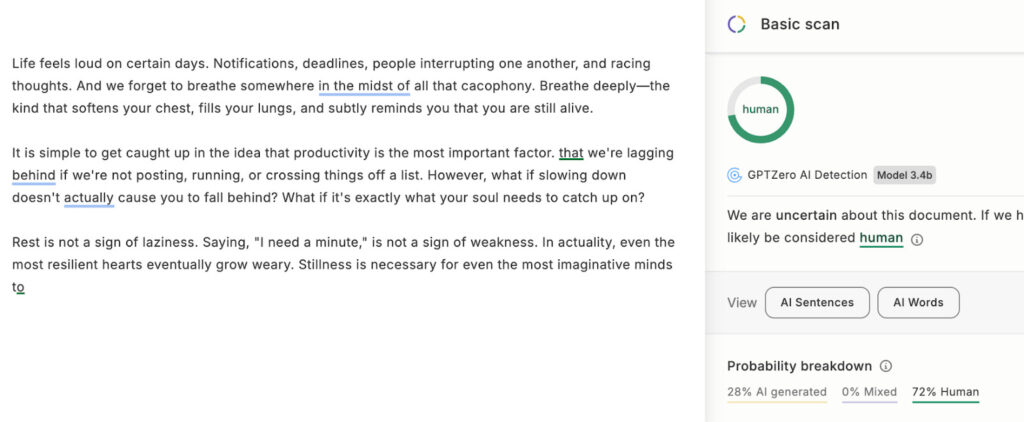
That makes sense: GPTZero holds up well enough when the AI sounds obviously robotic, but the moment the tone leans more human or natural, its confidence tends to drop off.
| Text Block | Score (%) | Detected as AI? |
| Block 1 – AI | 91% | Yes |
| Block 2 – AI | 82% | Yes |
| Block 3 – AI | 68% | No |
| Block 4 – Human | 15% | No |
| Block 5 – Human | 5% | No |
Summary: GPTZero correctly identified 2 out of 3 AI-generated texts and did not flag either human-written text, for a total of 4 out of 5 correct classifications.
Analysis
STEM Forged delivered consistently strong results across both AI and human samples.
It confidently flagged all AI-generated blocks with high scores (≥ 8) and accurately assigned low scores to the human texts — achieving perfect performance in this test set.
GPTZero, on the other hand, handled clear-cut AI content reasonably well, but struggled with more narrative writing, misclassifying one of the more creative AI samples.
Pros and Cons of Each Tool
STEMForged
Now let’s take a look at the STEM Forged AI Detector.
Pros of STEM Forged AI Detector
- Confidence scoring reduces false flags on borderline text.
- Allows unlimited scans, supports long-form and multilingual submissions, and is built with classroom workflows in mind.
- No data retention—submissions aren’t stored or reused, which aligns with institutional compliance needs.
- Sentence-level detection highlights specific AI-generated sections.
- Easy-to-use dashboard with instant results.
- Regular model updates to stay current.
Cons of STEM Forged AI Detector
- May flag human-written content as AI-generated, particularly for non-native English speakers.
GPTZero
Let’s break down what GPTZero does well and where it falls short.
Pros of GPT Zero:
- Instantly flags fresh ChatGPT, Gemini, or Claude content with near-perfect precision.
- Uses advanced detection methods like perplexity (how random the text is) and burstiness (sentence variation).
- Integrates easily via Chrome extensions & file uploads.
- Offers a 10,000-word free tier—ideal for light users.
Cons of GPT Zero:
- Sometimes calls classic human writing (like historical docs) “AI-generated” (false positive).
- Fails to catch AI text once it’s slightly tweaked. (false negative).
- Struggles with multilingual content and non-native English phrasing.
- Premium plans are pricey, and unused credits expire monthly.
Alternative Tools for AI Content Detection and Review
When it comes to detecting AI-generated content in academic settings, STEM Forged leads the way.
It’s built specifically for classrooms, with features that make it easy for educators to review work fairly, clearly, and at scale.
But great content review doesn’t end at detection.
Whether you’re handling edge cases, checking for originality, or refining tone and structure, adding tools like Undetectable AI can take your workflow even further.
Used together, they form a powerful combo: STEM Forged brings precision and trust to the detection process, while Undetectable AI offers smart ways to polish, verify, and strengthen content.
Here are a few Undetectable AI tools that complement STEM Forged in a broader review stack:
1 – AI Detector
The Undetectable AI Detector is called the #1 Best AI Detector by Forbes.
It helps you find if your text was written by an AI, like ChatGPT, Gemini, Claude, Llama, and others, with just one click.
Recently, the Undetectable AI Detector was also highlighted in a ZDNet review as one of the few tools that consistently flagged AI-generated content with 100% accuracy.
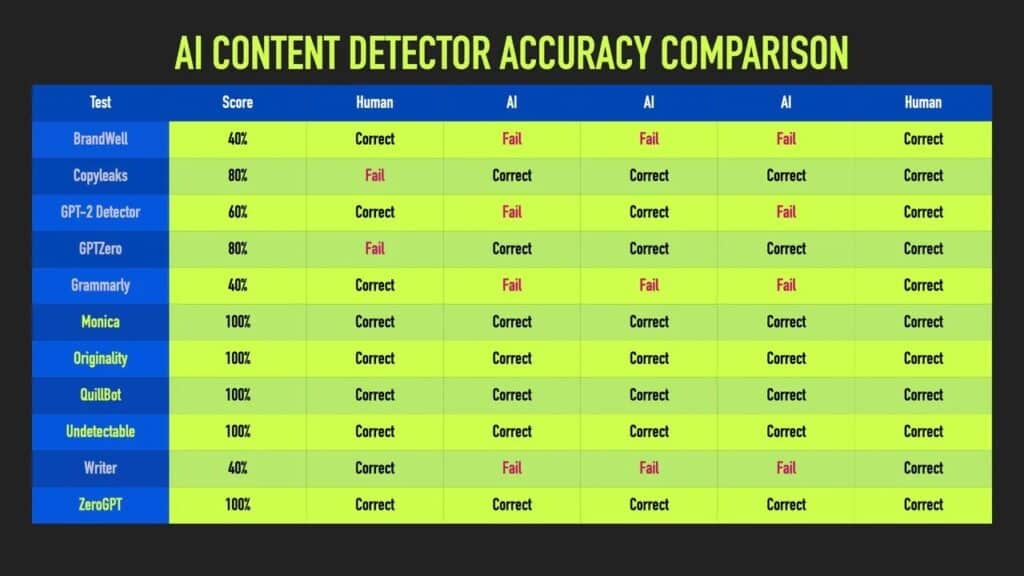
Source: David Gewirtz/ZDNET
Here’s why this tool is so efficient:
- It’s Free: You don’t have to pay anything to use it at first. You get the same powerful AI detection for free.
- Shows Results from Many Detectors: Instead of just one detector, this tool checks your text with many AI detectors at once.
- Trusted by Experts: It’s used by businesses (Forbes, BuzzFeed, USA Today etc) and professionals all over the world because it works well and keeps your information private.
- Works in Many Languages: If your text is in a different language, don’t worry! This tool can check content in many languages.
- Easy to Use: The tool has a simple design, so anyone can use it, even if you don’t know much about technology.
- Highly Accurate: It’s been praised for its accuracy, even by top media outlets like Forbes.
Buzzfeed has also reviewed this tool, stating that:
“Undetectable AI is at the forefront of making AI-generated content more human-like, paving the way for its wider adoption and acceptance.”
2 – AI Plagiarism Checker
The AI Plagiarism Checker helps ensure your writing is 100% unique—whether you’re a student, teacher, or business.
The tool is completely free, fast, and effective.
Here’s how it works:
- Copy any text you want to verify.
- Paste it into the tool.
- Click “Check AI Plagiarism.”
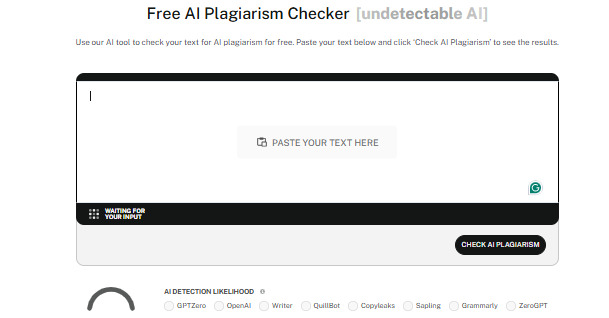
3 – AI Image Detector
The AI Image Detector helps you instantly identify whether an image was generated by AI or created by a human—no login, no watermark, no strings attached.
It supports major image formats and uses cutting-edge models trained to detect content from tools like Midjourney, DALL·E, and Stable Diffusion.
Here’s how to use this:
- Upload your image or drag and drop it into the tool
- Click ‘Detect’ to analyze the image for AI-generated patterns
- Review the confidence score and detection explanation
- Download the result or try another image in seconds
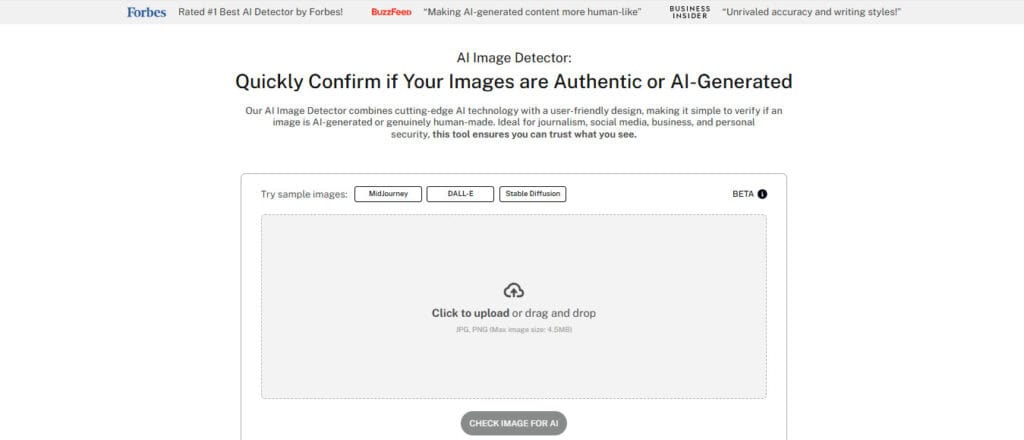
Final Verdict: Which One Is Better?
So, after all the discussion, the real question is: Which one is better?
Both tools are solid, doing what they’re supposed to—checking your writing, spotting AI content, and helping protect your work.
But STEM Forged takes the lead. It’s more accurate, performs better in tests, and stands out as a top choice for users looking for a reliable AI detection tool.
It handles both AI and human content with a level of confidence GPTZero just couldn’t match.
When paired with Undetectable AI, the combination becomes even more powerful.
The combination covers all the bases, making writing feel authentic, secure, and clear.
Let AI do the heavy lifting—but keep the heart in the writing.
Because at the end of the day, what matters most is not just passing a test… it’s having the skill.
